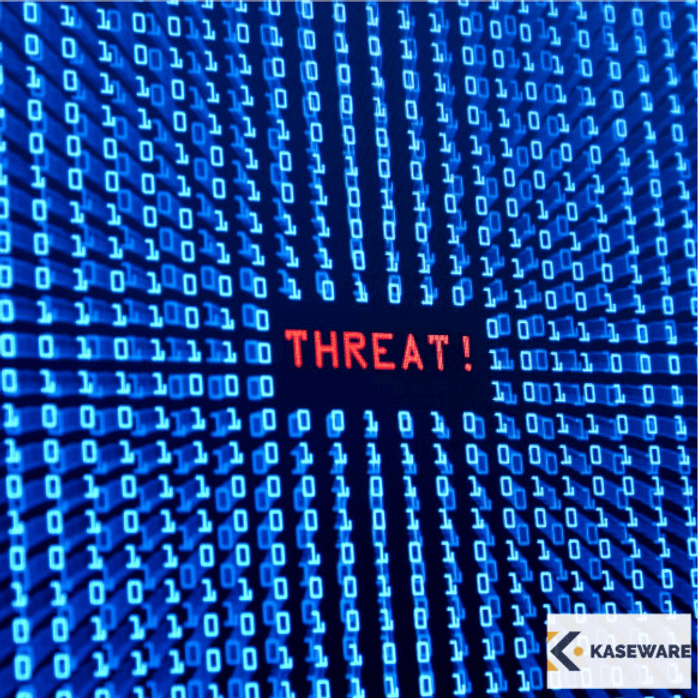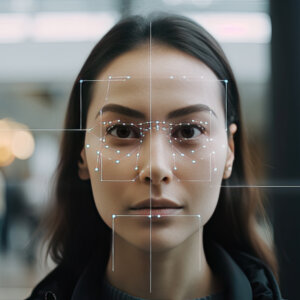
2024 in Review: Key Trends & Threats in Security Investigations
2024 has been a transformative year in the world of investigations and security, shaped by groundbreaking advancements in technology and an evolving threat landscape.
From the rise of AI-powered cybersecurity tools to the emergence of highly organized ransomware ecosystems, this year underscored the growing complexity of maintaining security in a hyper-connected world.
Investigators and security professionals navigated unprecedented challenges, leveraging innovation and collaboration to stay ahead of increasingly sophisticated threats.
Let’s take a look at the key trends and lessons learned throughout 2024 and strategies you can implement to future-proof investigative processes throughout the next year.
An Overview of the Investigations and Security Landscape in 2024
The line between physical and digital threats continued to blur in 2024, driven by the rapid adoption of technologies like artificial intelligence (AI), the Internet of Things (IoT), and cloud computing.
While these technologies created efficiencies, they also expanded attack surfaces, presenting new vulnerabilities for malicious actors to exploit.
Simultaneously, cybercriminal networks became more global and interconnected, pushing investigators to adopt more sophisticated tools and approaches.
The Continued Rise of AI-Powered Cybersecurity
Artificial intelligence emerged as a double-edged sword, transforming both the defense and offense of cybersecurity.
Many organizations leveraged AI to detect, prevent, and respond to threats more efficiently, but attackers also adopted the technology to outsmart some existing defenses.
How AI Transformed Threat Detection and Prevention in 2024
AI became the backbone of advanced cybersecurity systems, enabling real-time analysis of vast datasets to detect anomalies and predict threats.
Machine learning algorithms powered automated systems that could thwart phishing attempts, detect insider threats, and even shut down ransomware attacks before they spread.
For investigators, AI offered enhanced tools for evidence collection, such as natural language processing for analyzing communication patterns and identifying suspicious behaviors.
The Threat of AI-Powered Deepfake Attacks in 2024
While AI has helped revolutionize security, it has also opened the door to significant threats, particularly deepfake attacks.
Deepfakes, which use AI to manipulate audio and video content with stunning realism, have emerged as a potent weapon for cybercriminals. These synthetic creations pose unique challenges, from undermining trust in digital media to facilitating sophisticated scams and fraud.
Cybercriminals have weaponized deepfake technology in alarming ways, including impersonating executives to authorize fraudulent transactions (often called “synthetic identity fraud”) and creating fake audio or video evidence to manipulate legal or political outcomes. The rise of deepfake ransom schemes, where attackers fabricate compromising videos to extort victims, has further demonstrated the disruptive potential of this technology.
The ethical implications of deepfakes are equally concerning. Unlike traditional cybersecurity threats, deepfakes exploit human perception rather than technical vulnerabilities. This makes them particularly insidious, as the line between reality and fabrication becomes increasingly blurred. In an era where seeing is no longer believing, the risks extend beyond individual targets to societal trust in media and institutions.
Addressing these threats requires a multi-faceted approach. While AI-driven detection systems are being developed to identify deepfakes, organizations should prioritize educating their employees and the public on recognizing deepfake content and verifying sources.
Collaboration across industries and governments will also be crucial in establishing regulations and ethical guidelines to curb the misuse of this powerful technology.
Sophisticated Ransomware Attacks: An Escalating Threat
2024 solidified ransomware as one of the most pervasive threats in cybersecurity, with attacks growing in scale, sophistication, and financial impact.
High-Profile Ransomware Attacks in 2024
Ransomware attacks continued to dominate headlines in 2024, disrupting industries critical to everyday life and exposing alarming vulnerabilities.
High-profile incidents, such as the CDK Global ransomware attack and the Change Healthcare ransomware attack, underscored the devastating consequences these threats can have on vital operations and sensitive data.
The CDK Global attack, targeting a leading provider of software solutions for the automotive retail industry, highlighted the ripple effects ransomware can have on interconnected supply chains. This attack not only disrupted dealerships reliant on CDK’s software but also jeopardized customer data, leaving organizations scrambling to restore operations while addressing potential legal and reputation fallout.
Similarly, the Change Healthcare ransomware attack demonstrated the catastrophic impact of ransomware on the healthcare sector. As a major provider of healthcare technology and revenue cycle management solutions, Change Healthcare faced operational disruptions that cascaded across hospitals and healthcare providers. Patients’ personal health information (PHI) was held hostage, prompting widespread concerns over privacy violations and potential identity theft.
These attacks, alongside many others, have pushed organizations to reassess their cybersecurity postures. The sheer scale of ransom demands—often reaching tens of millions of dollars—combined with the operational downtime and recovery costs, has highlighted the critical need for proactive defense strategies.
Businesses across sectors are now investing in incident response planning, employee training, and advanced threat detection technologies to better prepare for this growing menace.
The Evolving Ransomware-as-a-Service Ecosystem
The rise of ransomware-as-a-service (RaaS) enabled even low-skilled hackers to launch complex attacks.
RaaS providers offered subscription-based models, complete with customer support, creating a booming underground market. This development significantly lowered the barrier to entry for cybercriminals, amplifying the scale and frequency of attacks worldwide.
Expanding Attack Surfaces and Data Breaches
The rapid pace of digital transformation in 2024 introduced both opportunities and vulnerabilities.
Organizations across sectors integrated advanced technologies like cloud computing, IoT, and remote collaboration tools to boost efficiency and connectivity. However, these advancements significantly expanded their attack surfaces, leaving more entry points for cybercriminals.
Attackers eagerly exploited these vulnerabilities, using sophisticated tactics to breach networks, steal sensitive data, and disrupt operations. The continued rise in hybrid work environments further compounded the challenge, as organizations struggled to secure remote endpoints, home networks, and personal devices used for work.
The IoT Explosion and Security Gaps
The proliferation of IoT devices in 2024 revolutionized industries but also created unprecedented security challenges.
Smart thermostats, industrial sensors, wearable health monitors, and connected vehicles all became integral to daily operations. Unfortunately, many of these devices were built with functionality in mind, often at the expense of security.
Inadequate encryption, outdated firmware, and weak default passwords turned IoT devices into vulnerable gateways for attackers.
A compromised smart device often provided hackers with access to broader networks, enabling lateral movement to more sensitive systems. For example, attackers could exploit a single unsecured HVAC system in a corporate building to breach an enterprise network—a scenario that occurred multiple times in 2024.
Strategies for Securing Expanding Digital Ecosystems
To address these challenges, organizations adopted a variety of strategies to secure their increasingly complex digital ecosystems.
- Increased Endpoint Protection: Deploying advanced endpoint security software that detects and mitigates threats in real time.
- Zero-Trust Frameworks: Ensuring that no user or device is trusted by default, as discussed in greater detail below.
- IoT Security Standards: Requiring strict security protocols for IoT device manufacturers, including encryption and regular patch updates.
- Employee Training: Educating staff on best practices, such as recognizing phishing attempts and maintaining strong passwords, to reduce human error.
Regular audits and penetration testing were also key to identifying vulnerabilities and ensuring compliance with cybersecurity standards.
Zero-Trust Security: A Must-Have Framework
Zero-trust security emerged as a cornerstone for cybersecurity in 2024, as organizations sought proactive measures to mitigate the risk of breaches.
Unlike traditional models, which relied on perimeter defenses, zero-trust assumes that threats could already exist inside the network.
Core Principles of Zero-Trust Security in 2024
Zero-trust operates on these key foundational principles:
- Continuous Authentication: Users and devices are continuously verified, ensuring they have legitimate access to resources at every step.
- Least-Privilege Access: Users and devices only have access to the resources they absolutely need, minimizing potential exposure to sensitive data.
- Real-Time Monitoring: Activity is continuously monitored for anomalies, enabling swift responses to suspicious behavior.
This framework drastically reduced unauthorized access and lateral movement within networks, making it one of the most effective strategies against today’s threats.
Overcoming Implementation Challenges
Despite its benefits, implementing zero-trust security came with challenges.
Legacy systems often lacked compatibility with modern authentication protocols, requiring costly upgrades. Additionally, organizations faced resistance from employees unaccustomed to strict access controls.
However, those that successfully transitioned to zero-trust enjoyed significant improvements in security. By integrating advanced AI tools and fostering a culture of security-first thinking, they achieved faster breach detection, reduced response times, and enhanced overall resilience.
Cybercrime Sophistication: A New Era of Complexity
The complexity of cybercrime reached unprecedented levels in 2024, fueled by the globalization of criminal networks and the adoption of cutting-edge technologies by attackers.
Cybercriminals operated like professional enterprises, leveraging sophisticated tools and strategies to stay ahead of defenses.
Globalization of Cybercrime Networks
Cybercrime transcended borders, with attackers forming international syndicates to pool resources and evade detection. Encrypted communication tools, decentralized marketplaces, and cryptocurrency enabled seamless collaboration among these groups.
Law enforcement agencies faced significant hurdles in tackling these networks due to jurisdictional limitations and the anonymity provided by advanced encryption. Interagency cooperation and information sharing became critical to dismantling these operations.
Interplay of Emerging Technologies and Criminal Activities
Cybercriminals increasingly leveraged emerging technologies to enhance their operations.
Deepfakes enabled fraudulent impersonations, targeting financial institutions and individuals alike. Blockchain, initially developed for secure transactions, was exploited for money laundering and obfuscating illegal activities. Quantum computing also began to surface as a potential disruptor due to research suggesting they may be able to crack traditional encryption methods.
These advancements highlighted the need for ongoing innovation and vigilance among security professionals.
Lessons Learned in 2024
The challenges of 2024 provided a wealth of insights for security professionals.
Adaptability, collaboration, and a balance between technological innovation and human expertise proved critical in navigating the evolving threat landscape.
Adapting Investigative Processes to Evolving Threats
To keep pace with increasingly sophisticated attackers, investigative teams embraced agile workflows. Cloud-based case management tools enabled real-time collaboration, while AI-powered analytics accelerated evidence collection and threat identification.
These advancements allowed teams to respond more effectively to incidents, reducing the time to resolution and improving outcomes.
Balancing Technology with Human Expertise
While technology enhanced investigative capabilities, it could not replace human intuition and critical thinking.
Complex cases often required nuanced decision-making, which no algorithm could replicate.
The most effective teams paired skilled professionals with cutting-edge tools, creating a synergy that delivered optimal results.
How Kaseware Helps Investigators Stay Ahead
Kaseware’s innovative platform provided investigators with the tools they needed to address 2024’s most pressing challenges.
AI-Driven Insights for Proactive Threat Detection
Kaseware’s AI-powered analytics are transforming how investigators identify and address threats, bringing unparalleled efficiency and precision to modern investigative processes.
Leveraging Microsoft’s Azure AI Services, Kaseware enhances investigations with machine learning tools that automate tasks, uncover critical details from evidence, translate more than 125 languages and dialects, analyze images, and enable proactive responses to emerging threats.
These advanced features empower investigators to detect patterns, anomalies, and potential threats that traditional methods might miss, allowing them to act swiftly and preemptively.
Real-Time Collaboration in Complex Cases
Kaseware’s secure, cloud-based collaboration tools revolutionize how investigative teams work together.
These tools enable seamless sharing of intelligence, task assignment, and progress tracking across agencies, regardless of location. Features like centralized case dashboards, role-based access, and integration with other investigative tools ensure efficiency and confidentiality.
This functionality proves invaluable in cross-jurisdictional cases, where teams from different regions or organizations need to collaborate in real time without delays or communication silos.
By providing a unified platform for managing complex investigations, Kaseware empowers teams to resolve cases faster and more effectively.
Automated Reporting and Seamless Case Management
Kaseware simplifies case management and reporting with fully customizable dashboards and automated tools designed for efficiency and precision.
Investigators can create tailored dashboards using an intuitive drag-and-drop interface, ensuring that the most critical data is front and center every time they log in. Modules like “My Work” and “Open Cases” provide instant access to daily tasks and active investigations, eliminating time wasted on navigation.
Out-of-the-box reports, developed by industry experts, give teams immediate insights, while advanced users can leverage SQL and ETL tools for more complex data analysis.
By combining flexibility, accessibility, and analytics, Kaseware allows investigators to focus on solving cases, not managing administrative tasks.
Navigate Security and Investigation Challenges with Innovation and Collaboration
Clearly, 2024 showcased the dynamic interplay of challenges and innovations in investigations and security.
By leveraging tools like Kaseware and fostering a culture of adaptability and collaboration, organizations can navigate the complexities of modern threats with confidence.
The year ahead will demand vigilance, creativity, and a commitment to continuous improvement.
Ready to see how Kaseware can help your team tackle 2025’s challenges?
Schedule a demo today to explore the platform’s powerful features and discover how it can transform your investigative processes.








